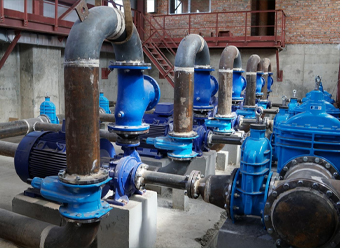Marathi
- Afrikaans
- Albanian
- Amharic
- Arabic
- Armenian
- Azerbaijani
- Basque
- Belarusian
- Bengali
- Bosnian
- Bulgarian
- Catalan
- Cebuano
- Corsican
- Croatian
- Czech
- Danish
- Dutch
- English
- Esperanto
- Estonian
- Finnish
- French
- Frisian
- Galician
- Georgian
- German
- Greek
- Gujarati
- Haitian Creole
- hausa
- hawaiian
- Hebrew
- Hindi
- Miao
- Hungarian
- Icelandic
- igbo
- Indonesian
- irish
- Italian
- Japanese
- Javanese
- Kannada
- kazakh
- Khmer
- Rwandese
- Korean
- Kurdish
- Kyrgyz
- Lao
- Latin
- Latvian
- Lithuanian
- Luxembourgish
- Macedonian
- Malgashi
- Malay
- Malayalam
- Maltese
- Maori
- Marathi
- Mongolian
- Myanmar
- Nepali
- Norwegian
- Norwegian
- Occitan
- Pashto
- Persian
- Polish
- Portuguese
- Punjabi
- Romanian
- Russian
- Samoan
- Scottish Gaelic
- Serbian
- Sesotho
- Shona
- Sindhi
- Sinhala
- Slovak
- Slovenian
- Somali
- Spanish
- Sundanese
- Swahili
- Swedish
- Tagalog
- Tajik
- Tamil
- Tatar
- Telugu
- Thai
- Turkish
- Turkmen
- Ukrainian
- Urdu
- Uighur
- Uzbek
- Vietnamese
- Welsh
- Bantu
- Yiddish
- Yoruba
- Zulu
Telephone: +86 13120555503
Email: frank@cypump.com
नोव्हेंबर . 09, 2024 11:35 Back to list
Vertical Slurry Pump Component for Enhanced Casting and Efficient Fluid Handling
Vertical Slurry Pumps Essential Components and Applications
In various industrial processes, the need to transport abrasive and corrosive materials is a common challenge. One of the most effective solutions to this problem is the use of vertical slurry pumps. These pumps, specifically designed to handle slurries — mixtures of water and solid particles — are crucial in mining, dredging, and mineral processing industries. This article delves into the critical components of vertical slurry pumps, focusing particularly on the casting parts that contribute to their efficiency and durability.
Understanding Vertical Slurry Pumps
Vertical slurry pumps are designed to work efficiently in applications that involve heavy, viscous fluids. The design typically includes a vertical shaft and an impeller situated below the motor, allowing for easy handling of slurries with high solid content. These pumps are commonly utilized in environments such as tailings management, coal handling, and paste filling in underground mineral operations.
Casting Parts The Backbone of Performance
The performance and longevity of vertical slurry pumps greatly depend on their construction materials. Among the most important components are those made through casting processes. Casting is favorable due to its ability to create complex shapes for pump components and its strength to withstand abrasive environments.
1. Impellers The impeller is the heart of the slurry pump. It is responsible for the movement of the slurry through the pump and must be designed to handle significant wear. Cast iron and high-chrome alloys are often used for impellers due to their hardness and resistance to erosion. The shape, size, and material of the impeller influence the pump's efficiency and the quality of the slurry being moved.
casting slurry pump part - vertical slurry pump

2. Casing The pump casing holds all the internal components together and provides protection against external elements. A robust casing reduces the likelihood of leaks and maintains pressure within the pump system. Similar to impellers, casings are commonly cast from durable and corrosion-resistant materials to ensure longevity.
3. Wear Plates and Liners Given the abrasive nature of slurries, wear plates and liners within the pump help protect vital components from damage. These parts are essential for extending the pump's operational life. Casting these components from hardened materials allows them to absorb the stress from abrasive particles, significantly minimizing wear and tear.
4. Suction Hoses and Discharge Flanges These components are integral in directing the flow of slurries into and out of the pump. Precision casting ensures that the connections remain secure and leak-proof, which is crucial for maintaining pump efficiency and preventing operational hazards.
Applications in Industry
Vertical slurry pumps with quality casting components excel in various applications. In the mining industry, they are used to transport mineral slurry without damaging the pump. In dredging, they efficiently remove sediments from water bodies. Additionally, in wastewater treatment plants, these pumps manage slurries of sewage and other waste materials.
Conclusion
The importance of casting in the construction and operation of vertical slurry pumps cannot be overstated. The durability, efficiency, and reliability of these pumps hinge on the quality of their parts, especially those created through precision casting processes. Understanding the functionality of these components allows companies to invest wisely in slurry pump technology, ensuring optimal performance in their industrial applications. As industries continue to evolve and face new challenges, the role of robust vertical slurry pumps will remain critical in managing the complex nature of slurries efficiently and effectively.
-
ISG Series Pipeline Pump - Chi Yuan Pumps | Energy Efficiency&Compact Design
NewsAug.03,2025
-
ISG Series Vertical Pipeline Pump - Chi Yuan Pumps Co., LTD.|High Efficiency, Low Noise, Durable
NewsAug.02,2025
-
ISG Series Vertical Pipeline Pump - Chi Yuan Pumps | High Efficiency, Low Noise
NewsAug.02,2025
-
ISG Series Vertical Pipeline Pump- Chi Yuan Pumps Co., LTD.|High Efficiency&Compact Design
NewsAug.02,2025
-
Heavy-Duty Mining Sludge Pumps - Wear-Resistant Slurry Handling
NewsAug.02,2025
-
Horizontal Split Case Pump with GPT-4 Turbo | High Efficiency
NewsAug.01,2025










